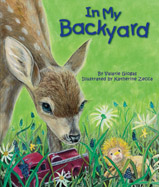Alignment to Standards for LA

| Grade | Number | Standard |
|---|---|---|
| 1 | LS-1.26 | Describe the differences between plants and animals |
| 1 | LS-1.32 | Describe features of some animals that benefit them in their environments |
| 2 | LS-2.34 | Describe inherited characteristics of living things |
| 2 | SE-2.45 | Locate and identify plants and animals within an ecosystem |
| 3 | LS-3.35 | Compare structures (parts of the body) in a variety of animals (e.g., fish, mammals, reptiles, amphibians, birds, insects) |
| 3 | LS-3.38 | Classify groups of organisms based on common characteristics |
| 3 | LS-3.39 | Compare organisms from different groups (e.g., birds with mammals, terrestrial plants with aquatic plants) |
| 4 | LS-4.41 | Describe how parts of animalsê bodies are related to their functions and survival (e.g., wings/flying, webbed feet/swimming) |
| 4 | LS-4.49 | Compare similarities and differences between parents and offspring in plants and animals |
| 4 | LS-4.51 | organisms can modify their environment to meet their needs (e.g., beavers making dams) |
| 4 | LS-4.52 | Describe how some plants and animals have adapted to their habitats |
| 4 | LS-4.53 | Identify the habitat in which selected organisms would most likely live and explain how specific structures help organisms to survive |
| K | LS-K.29 | Match models of baby animals with their parents |
| PK | LS-PK.20 | Give examples of different kinds of plants and different kinds of animals |
| PK | LS-PK.22. | Learn about animals and plants through nonfiction literature (For Creative Minds) |